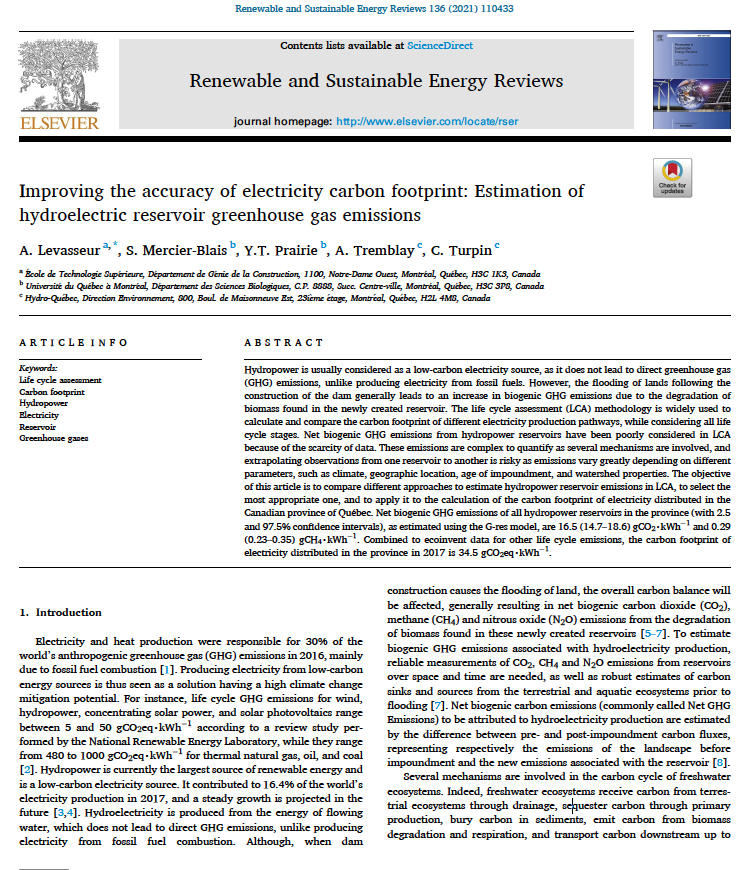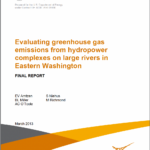Abstract: Hydropower is usually considered as a low-carbon electricity source, as it does not lead to direct greenhouse gas (GHG) emissions, unlike producing electricity from fossil fuels. However, the flooding of lands following the construction of the dam generally leads to an increase in biogenic GHG emissions due to the degradation of biomass found in the newly created reservoir. The life cycle assessment (LCA) methodology is widely used to calculate and compare the carbon footprint of different electricity production pathways, while considering all life cycle stages. Net biogenic GHG emissions from hydropower reservoirs have been poorly considered in LCA because of the scarcity of data. These emissions are complex to quantify as several mechanisms are involved, and extrapolating observations from one reservoir to another is risky as emissions vary greatly depending on different parameters, such as climate, geographic location, age of impoundment, and watershed properties. The objective of this article is to compare different approaches to estimate hydropower reservoir emissions in LCA, to select the most appropriate one, and to apply it to the calculation of the carbon footprint of electricity distributed in the Canadian province of Qu´ebec. Net biogenic GHG emissions of all hydropower reservoirs in the province (with 2.5 and 97.5% confidence intervals), as estimated using the G-res model, are 16.5 (14.7–18.6) gCO2∙kWh−1 and 0.29 (0.23–0.35) gCH4∙kWh−1. Combined to ecoinvent data for other life cycle emissions, the carbon footprint of electricity distributed in the province in 2017 is 34.5 gCO2eq∙kWh−1.
Authors: A. Levasseur, S. Mercier-Blais, Y.T. Prairie, A. Tremblay, C. Turpin

Open source article: https://www.sciencedirect.com/science/article/pii/S1364032120307206


